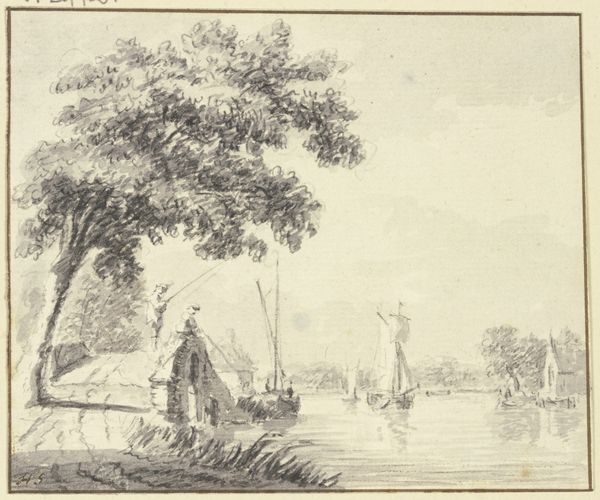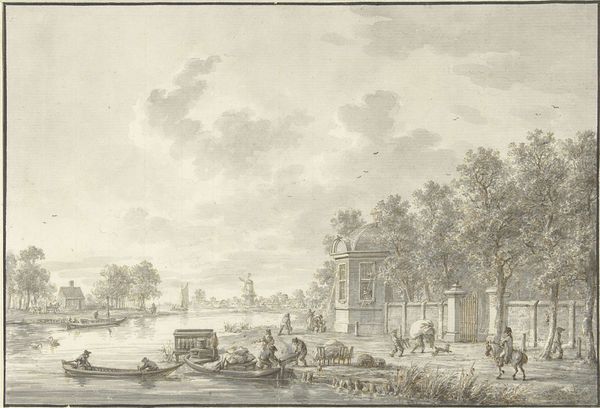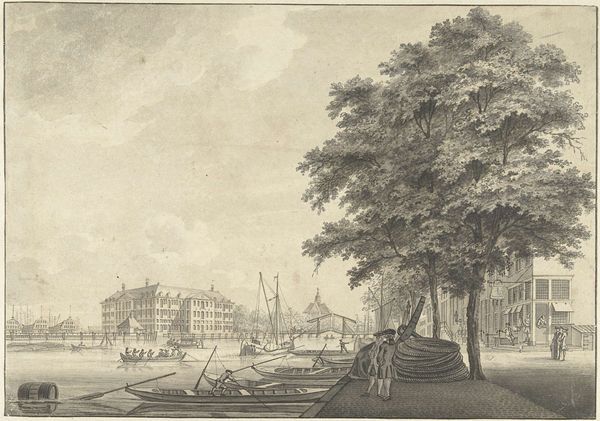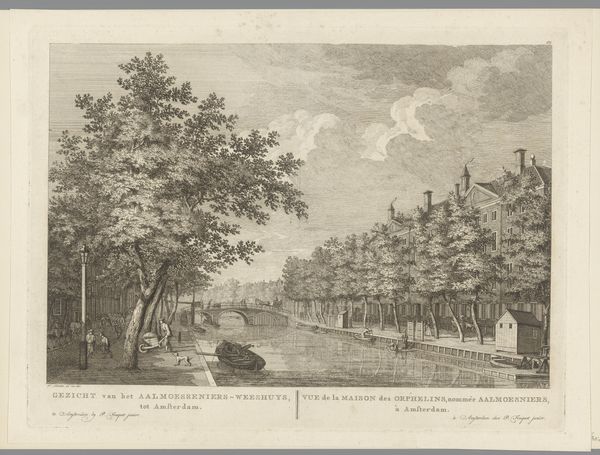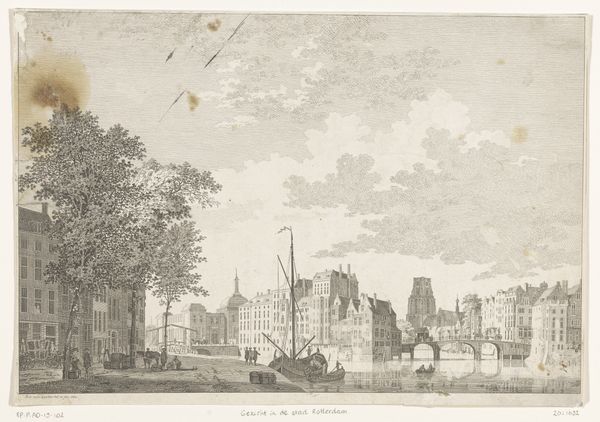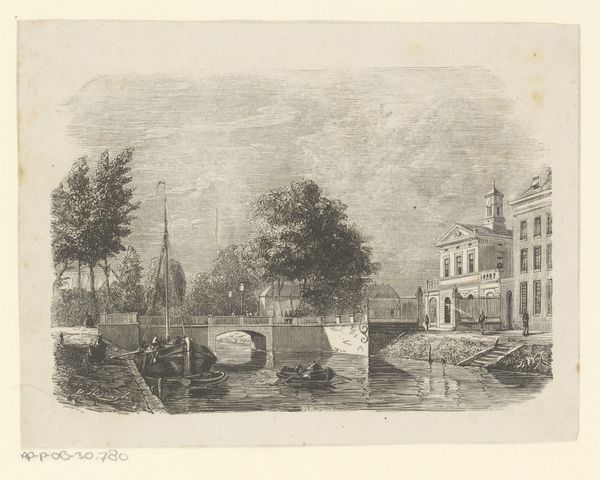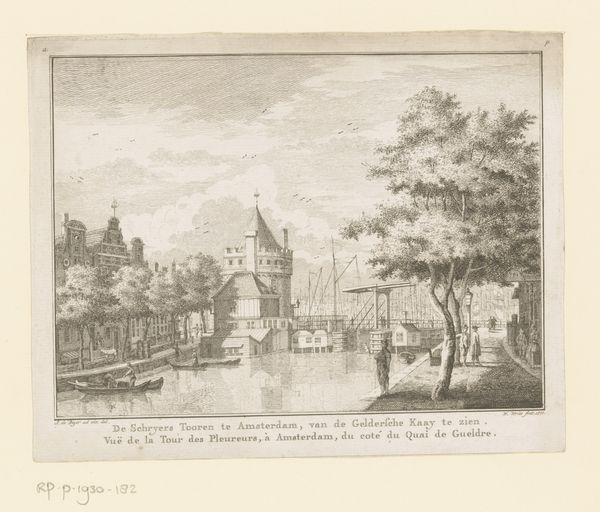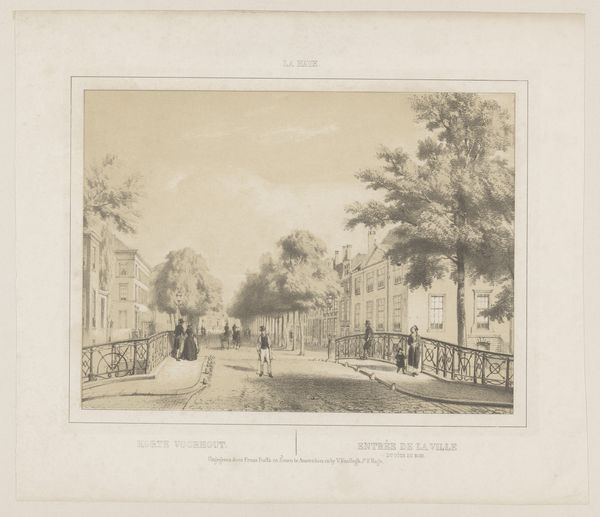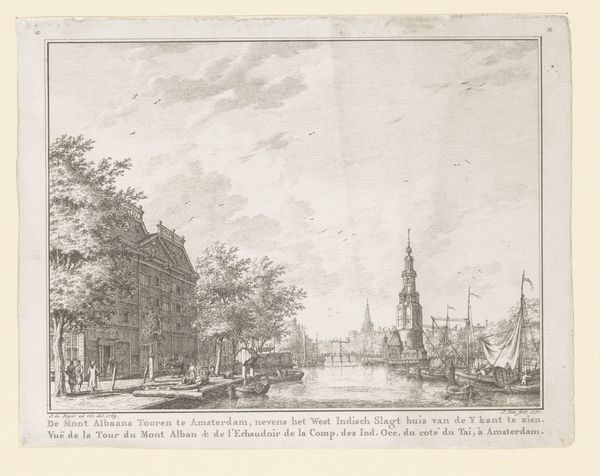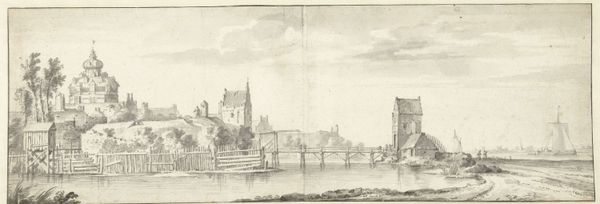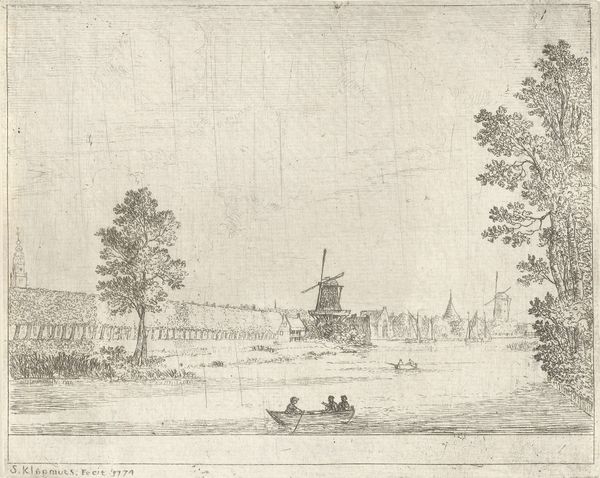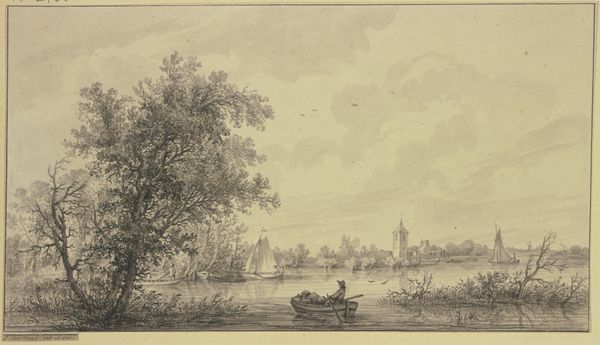
Het huis Spieringshoek tussen Schiedam en Vlaardingen; een deel van de singel om de tuin en de weg erlangs. Links het huis, de achterzijde c. 1750
0:00
0:00
drawing, pencil
#
drawing
#
landscape
#
pencil
#
cityscape
#
genre-painting
#
academic-art
#
realism
Dimensions: height 328 mm, width 384 mm, height 291 mm, width 347 mm
Copyright: Rijks Museum: Open Domain
Editor: This is Cornelis Pronk’s drawing from around 1750, "Het huis Spieringshoek tussen Schiedam en Vlaardingen," rendered in pencil. There’s a wonderful sense of everyday life coexisting with the formal architecture and planned landscape. What can we read into this scene beyond just a snapshot of a wealthy estate? Curator: It’s a compelling image, isn’t it? Consider the power dynamics at play. We see the landowners’ residence, meticulously rendered, signifying wealth and control. Yet, simultaneously, Pronk depicts figures – perhaps laborers, servants, or even enslaved people – moving within that space. How does their presence complicate the narrative of pastoral tranquility and ownership? Editor: So, you're suggesting the drawing might not just be a celebration of wealth, but also a subtle commentary on the social structure? Curator: Precisely! Think about the Dutch Golden Age and its reliance on colonial exploitation. The wealth displayed here wouldn’t have been possible without those systems. What questions does that raise for you when viewing the drawing? Editor: It definitely shifts my perspective. I initially saw a peaceful scene, but now I see a representation of the societal hierarchies of the time and the people whose labor made it possible. Curator: And it prompts us to consider the responsibility of the artist. Was Pronk merely documenting, or was there a more critical intent embedded in his choices? Does art always need to carry a explicit activist statement to speak volumes about it's contemporary context? Editor: I guess I was looking at the aesthetic qualities of the drawing without considering that. Thanks for offering a different lens, that certainly enriched my understanding! Curator: My pleasure. These works are rarely simple depictions. Engaging with their social and political contexts opens up so much more for discussion.
Comments
No comments
Be the first to comment and join the conversation on the ultimate creative platform.
